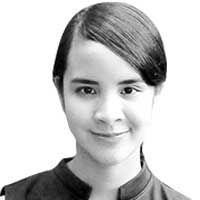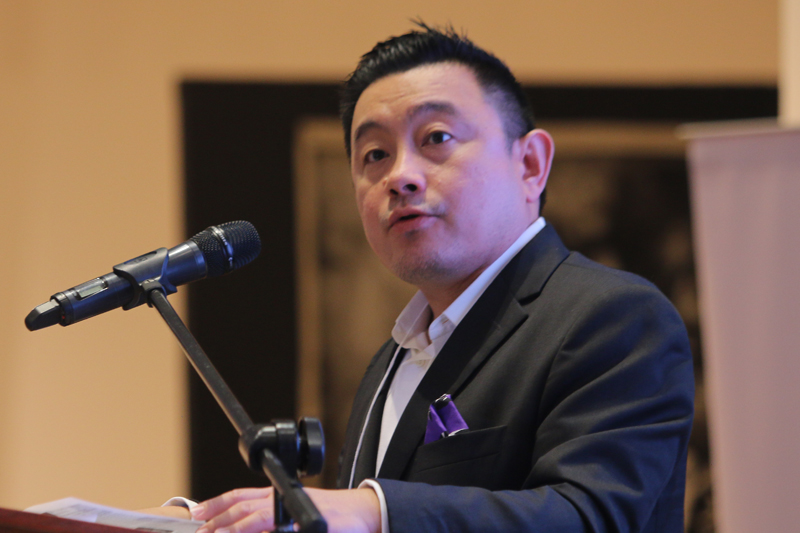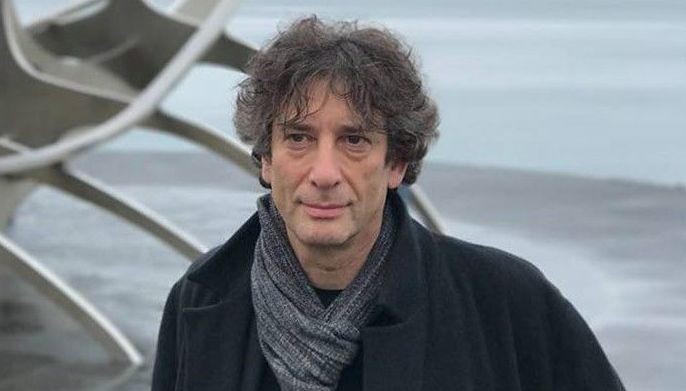Safe space for unsafe ideas: Making museums vulnerable again


Boon Hui Tan, vice president of global arts and cultural programs and museum director of Asia Society New York, stresses the importance of fostering discussion and the role of the arts for better cultural understanding. Held from Nov. 6 to Nov. 7, Asia Society’s Arts and Museum Summit brought together global museum leaders exchanging perspectives on cultivating an art community in the 21st century.
It has taken many art fairs and biennales to say that the international art market has its eye on the East. The question now, according to Asia Society vice president of global arts and cultural programs and museum director Boon Hui Tan, is not whether our international audience pays enough attention. But rather, is the Asian art community prepared — and willing — to respond to it?
“We are a region where public infrastructure and particularly non-profit infrastructure for the support of artists and the building of audiences of public museums is still in its infancy,” says Tan of Southeast Asia. “We are all post-colonial nations. We are not France. The French, you look at the Louvre — they have been investing systematically in culture for 200 years.”
Equally obvious, moreover, as the lack of infrastructure is the lack of discussion about, not what sells and who sells, but what exactly makes good art and how must cultural institutions develop their practice to accommodate the changes happening globally?
Addressing this need for cross-cultural discourse, Asia Society hosted its third Arts and Museum Summit last Nov. 6 at the Arete and Nov. 7 at the Ayala Museum. Its aim, according to Tan, is “to create a platform that is primarily not an academic symposium, but one focused around practice, around these messy but practical issues that confront those of us that work in museums.”

Rhana Devenport, director of Auckland Art Gallery Toi o Tamaki, encourages museums to collaborate with contemporary artists to present new possibilities and solutions.
In a time of pressing political divisions rising alongside the seemingly borderless free world promoted by the internet, noted art practitioners discussed how the art community are called to rethink conventions — beginning with the role of museums, artists, and their audience.
“With the internet, the information at their fingertips is more inspiring and engaging, so, gradually these museums become repository of old stuff that is useless,” says Jack Persekian, the founder and director of Al Ma’mal Foundation for Contemporary Art in Jerusalem. “Are these simply relics from some bygone era or can they be objects that were kept in order for us to learn something about our present or our future?”
Tan and Persekian pointed out the need to restructure the museum-going experience as a social experience: to introduce an immersive and participatory component in the museum visit, to tap the potential of technology to immerse the audience in a collection’s historical context or, as Tan offers simply, to encourage people to talk. “Don’t think of museums as simply deliverers of information,” he says. “Ask guards not to silence the visitors when they have a disagreement.”
Veering further away from the concept of museums as static and passive custodians of the past, director of Auckland Art Gallery Toi o Tamaki Rhana Devenport put it plainly: “We’re so caught up in protection, conservation, and making sure the humidity levels are right. When one thinks about museums, and the potential for an open space for dialogue, I often come back to (the idea of it being a) safe place for unsafe ideas. Let’s make museums vulnerable again.”
Devenport and Persekian both underscored the museum’s potential as a site for disruption. “We need to inspire the audience and (tell) the younger generation that there is a way to challenge traditions,” says Persekian. “The education system is very much regimented and very much dictated. If museums come forward as very conservative structures that are following these certain patterns, where is inspiration going to come? If museums do not take the lead, people would eventually leave these institutions.”
Museums can be reimagined as active theaters of discourse in the contemporary age, and permanent collections, rather than viewed only within their own historical contexts, can be put in constant conversation with the works of contemporary artists, tapping their capacity to reactivate old relics.
In the Philippine art scene, for instance, speakers have cited that the Lopez Museum creates space for art and resistance, in a time where the state doesn’t exactly support that discourse. Artists, as Persekian has mentioned, “must have the freedom to experiment, interrogate, and propose new modes of thinking” — to present their ideas in cultural spaces that are liberal enough, if not free enough, to create an open dialogue.
“It’s not only the curators who can make the exhibitions,” said Devenport. “It’s a radical and dangerous idea,” added Persekian, “that, as a curator, you don’t so much show artists, but you create the potential for artists to come and disrupt and put together ideas that clash. That is one kind of approach that might be relevant for our time now.”
With the summit fostering an exchange of ideas and compelling museums to create more space for dialogue and critique, it urges art practitioners to engage in more questions, beyond whether or not the market has its eye on us: not only if we are ready to respond, but more importantly—as perhaps a subject of another discussion — why exactly do we need to?



















